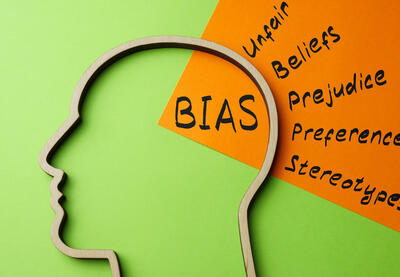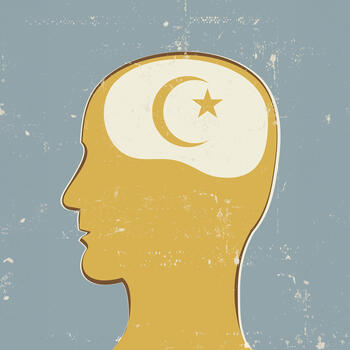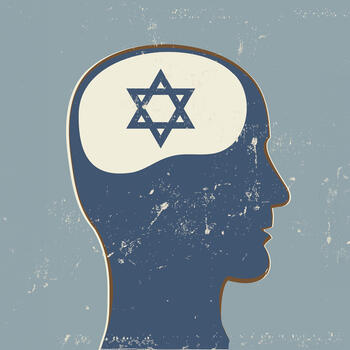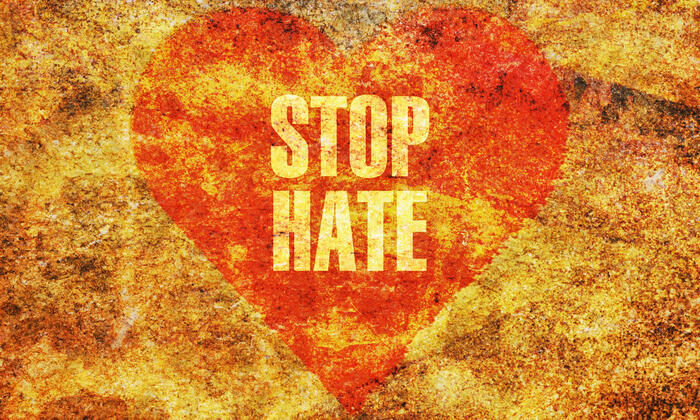In our globally connected society, nurturing young people’s interest in understanding and engaging with what is happening in and beyond their communities and our nation is essential. And we must do so in ways that reject bigotry.
The conflict in the Middle East, which escalated following Hamas’ October 7, 2023, attack in Israel and Israel’s subsequent war in Gaza, has led to a dramatic increase in hate incidents targeting people who are—or are perceived to be—Jewish, Muslim or Arab. While wars in this region have often led to spikes in Islamophobia and antisemitism, these two forms of hate are not inextricably linked, and both, like other forms of hate and racism, have a long history in the United States and other parts of the world.
The rise in antisemitism and Islamophobia in our society is also taking place in our schools. To address these forms of hate in schools and classrooms, we need to understand and address bigotry and proactively take measures to emphasize inclusion. This begins with an understanding of what Islamophobia and antisemitism are.
What Is Islamophobia?
Islamophobia is fear and hostility directed toward the religion of Islam and Muslims.
Islam is a world religion of approximately 1.9 billion people of various ethnicities. While not all Arabs are Muslim, Islamophobia is often connected to anti-Arab hate because Islam has been racialized and associated with Arab people. Because of this racialization of Islam, other people—often those of Asian heritage—who are perceived to be Muslim or Arab might be targeted by anti-Muslim hate.
Islamophobia can manifest in various ways. The Shoulder to Shoulder Campaign, a coalition of multifaith leaders committed to challenging anti-Muslim bigotry, categorizes Islamophobia into five “I’s”: ideological, institutional, interpersonal, internalized and intersectional.
- Institutionalized Islamophobia can refer to state-sponsored activities such as mass surveillance of Muslim communities, violations of civil rights and anti-Islam legislation introduced by lawmakers, as well as domestic and foreign policy.
- Ideological Islamophobia involves private, nongovernment actors who push anti-Muslim bigotry. This includes organized groups devoted to spreading anti-Muslim rhetoric and conspiracy theories. Over 30 of these groups have been designated as hate groups by the Southern Poverty Law Center (SPLC).
- Interpersonal Islamophobia can include incidents like hate crimes, harassment and bullying of those who are Muslim or perceived to be Muslim.
- Internalized Islamophobia pertains to mental health, self-image, and spiritual and holistic well-being. Some Muslims might internalize anti-Muslim stereotypes and tropes, such as followers of Islam being less civilized or more prone to violence than other people.
- Islamophobia can also be intersectional. Those who peddle Islamophobia might also adhere to white supremacist ideology or push other forms of discrimination like antisemitism, gender bias or hostility toward LGBTQ+ people.
Importantly, the various ways Islamophobia might manifest are not mutually exclusive and often work together to fuel acts of hate. For example, while an individual who commits a hate crime might not belong to an organized group, they might be influenced by anti-Islam rhetoric pushed by an ideological group. And anti-Muslim government policies can influence individuals to feel justified in harassing people perceived to be Muslim.
Anti-Muslim hate groups—particularly those with white supremacist ideology—“spread disinformation, prejudice and conspiracy theories about Muslims and Islam,” which include “denigrating Muslims and their faith as being monolithic, irrational, intolerant and a violent threat to American society.”
What Is Antisemitism?
Antisemitism is broadly defined as prejudice and hatred toward Jews, both as individuals and as a group, because of their Jewish identity. While the term “antisemitism” is more recent, anti-Jewish bigotry is one of the oldest forms of hatred.
Being Jewish “can be described as an ethnic, religious and cultural identity—some Jews identify with all three of those types of identity, others with just one or two.” Approximately 15 million people worldwide identify as Jewish, with roughly 7 million in the United States.
While it operates as an energizing force behind white supremacy, antisemitism exists across racial and ethnic groups and political lines. Antisemitism, like Islamophobia, can manifest through institutionalized discrimination, ideological bigotry and interpersonal behaviors, along with internalized and intersectional aspects.
Anti-Jewish codes, tropes and assumptions have a long history, and because of their often coded nature, people may not recognize antisemitism or how it negatively affects the daily experiences of Jewish Americans. However, ignoring the ways antisemitism manifests in microaggressions and stereotypes allows the justification of harassment, dehumanization and violence. Prominent examples of antisemitic tropes include the following:
- Vilifying Jews as powerful puppet masters who control governments and institutions. This includes global conspiracies about secret societies and economic power. This trope portrays Jews as covertly orchestrating world events, often through secretive and hidden organizations or financial influence, perpetuating harmful stereotypes of Jews as manipulative and all-powerful.
- Associating Jewish people with greed and money. This stereotype suggests that Jews are inherently obsessed with wealth and financial gain, feeding into age-old prejudices that paint Jewish people as untrustworthy or exploitative.
- Denying or distorting the Holocaust. This involves rejecting, revising or downplaying the genocide of 6 million Jews during World War II, which not only disrespects the memory of victims but, under the guise of “seeking the truth,” also enables the resurgence of antisemitism by undermining historical facts.
- Accusations of disloyalty to the U.S. or “dual loyalty” claims. This trope falsely accuses Jewish Americans of prioritizing Israel’s interests over those of the United States—or any other country where Jewish people live—and fosters suspicion and mistrust toward Jewish citizens based solely on their religion.
- Blood libel and deicide. These historical accusations falsely claim that Jews engage in ritualistic murder, such as using the blood of Christian children for religious purposes, and they hold Jews collectively responsible for the crucifixion of Jesus Christ. These dangerous myths have fueled violence and persecution against Jewish communities for centuries.
These antisemitic tropes are often used to manufacture fear and justify acts of bigotry by portraying Jews as undermining society and endangering others. Antisemitism plays a foundational role in many of the ideologies embraced by the hate groups the SPLC tracks. Extremists across the ideological spectrum use antisemitism to stir up panic and divide society. However, antisemitism reaches far beyond the confines of hate groups. In fact, much of the antisemitism seen in schools, in particular, is perpetuated by various stakeholders both in the classroom and outside of it.
How Antisemitism and Islamophobia Show Up in Schools
Understanding antisemitism and Islamophobia and recognizing how bias manifests in schools and harms young people are important steps toward finding ways to cultivate communities of support and affirmation for all.
Antisemitism and Islamophobia in schools can take many forms, including curriculum and instructional bias, discrimination, vandalism, harassment, and even assault. In Los Angeles, a Muslim mother reported that both of her daughters have been called “terrorists” by other students since October 2023. Her elementary-age daughter was targeted on the playground and asked about her support of Israel. When she was unsure how to respond, the other student told her, “Oh, you’re one of them, a terrorist.” In Connecticut, a Jewish student transferred schools after administrators failed to take action when another student regularly taunted him, saying, “We must exterminate all the Jews,” and inviting him to “Camp Auschwitz.”
Incidents like these are often perpetrated against students by their peers, but teachers and school administrators can also be the perpetrators. In California, a complaint alleges a teacher directed second graders to write “Stop Bombing Babies” on sticky notes, which were then placed on the door of the school’s only Jewish teacher. In this instance, the Jewish teacher is being blamed for the actions of the state of Israel, which is antisemitic. (It is important to note, however, that criticizing a country’s government is not inherently antisemitic or Islamophobic.) These examples show how identity-based harassment can manifest because of internalized and interpersonal antisemitism and Islamophobia.
Even educators with the best of intentions may be motivated by implicit bias and create uncomfortable or discriminatory situations for their students. This could include putting students on the spot to share their feelings about world events, condemn violence or defend their faith. It may include using popular catch phrases and rhetoric to discuss complex world events, which can distort the truth and cause harm toward one community or another. It may also include scheduling important exams on religious holidays, especially those that involve fasting.
Some teachers may feel that the best way to ensure equality in their classrooms is to take an approach that does not address or consider race, religion and ethnicity. However, failing to acknowledge their students’ unique identities means they are unable to recognize the ways race, religion and ethnicity shape their students’ experiences and learning needs. Educators should strive to understand how these identities impact their students while also recognizing that they do not make up an individual’s entire personal identity. Bullying and harassment in school have a significant impact on the mental health and well-being of children and teenagers. Experiences with bullying can lead to depression, anxiety, aggression, loneliness and low self-esteem. Additionally, victims of bullying have lower grades and are less engaged in class discussions.
When harassment is based on identity, these consequences can be exacerbated. For example, students may be less likely to wear religious symbols that signal their Jewish or Muslim identities and may feel less confident asking for religious accommodations for prayer or to observe religious holidays. This can intensify feelings of loneliness associated with bullying and create a wedge between a students’ religious identities and their desire for acceptance.
When educators perpetuate or allow bias—in their lessons, classroom environments, or behavior toward students or communities—students and families may feel unsafe and unsupported in schools, which affects learning and well-being. For example, following a series of pervasive antisemitic incidents in one school district after October 7, at least 30 Jewish families transferred their students to other schools. This poses a tremendous burden to those families and to the Jewish students who must adjust to a new school because school administrators could not maintain a safe environment for them. It also deprives the remaining students of the opportunity to form interfaith friendships and learn about other cultures.
Media coverage of world events and conflicts, especially on social media, is often filled with polarizing perspectives that can promote prejudice and hate. Schools, therefore, should be an essential anti-bias learning space. While we may hope that our schools function as safe havens that shelter students from the violence of the outside world, the effects of global events reverberate in our schools just as they do throughout society. Young people experience the same pain, anger and fear surrounding violence and wars as adults do, but they are still developing the cognitive and social emotional skills needed to understand these events. That’s why we must all support young people in times of conflict. And educators, along with parents and caregivers, have a responsibility to ensure all young people have the right to an education free from bigotry in an inclusive and supportive environment.
Toolkit: Creating Supportive School Culture To Counter Antisemitism and Islamophobia
When educators, students, parents and caregivers come together to co-create a positive school culture, complex and often difficult conversations can be facilitated to address prejudice and hatred in restorative ways. Culture and climate work takes time in building trust and establishing community, but the effort is worthwhile, especially when confronting topics like antisemitism, Islamophobia, and other forms of racism and bigotry.
The following recommendations provide examples of how educators can be intentional about constructing inclusive and supportive spaces. Parents and caregivers can play an important role in supporting and advocating for school culture that affirms all young people.
1. Build inclusive classroom culture.
Educators can begin by examining their classroom spaces and curricula. Start by auditing the content displayed on classroom walls and around the school hallways. Are all students’ identities reflected in those quotes, artworks or posters? What gaps are there, and how can young people help create the displays on the wall (or curate the books in your library) to ensure their learning spaces are reflective of who they are?
Co-created visuals of community identities are a constant reminder to students and families that they belong. Following up these visual markers with intentional curricular texts that also reflect the identities of students will underscore the value students bring to the learning space and the support they have from you as a result.
2. Build competency to facilitate difficult conversations.
In our polarized environment, avoiding popular slogans and rhetoric in discussing complex histories and world events can help to steer clear of language that may be divisive or cause hurt toward one community or another. Practice detailed and nuanced thinking about complicated issues with your students, rather than trying to simplify complexities with catch phrases.
LFJ Publications Mentioned in This Toolkit
Let's Talk!
Speak Up at School
Responding to Hate and Bias at School
Many young people crave the space to be able to dialogue about critical issues. Often it is the educator who is hesitant to facilitate such a conversation for fear of “saying the wrong thing.” It is therefore important for adults to lay the groundwork for engaging in these conversations. Educators need to recognize their own perspectives and biases, reflect on their own identities, and begin to understand how those impact their own competencies with certain critical topics. If you are unsure how to begin this work, LFJ’s Let’s Talk! guide has a few reflection activities to start.
Reflect on your identities by considering questions such as:
- What messages did I learn about Jewish and Muslim people growing up?
- How does my belonging to or not belonging to one of these identities impact my relationship to people who do?
- What messages—both implicit and explicit—do I convey to my students about religions and identities?
Continue your reflection by completing these statements:
- Talking about antisemitism and Islamophobia is challenging because …
- Talking about antisemitism and Islamophobia is necessary because …
- Talking about antisemitism and Islamophobia is beneficial because …
[Note: This activity can be valuable in addressing a variety of identities and topics, such as ability, race, body type, sexual orientation or immigration status, among others. See pages 5-11 of Let’s Talk! for more reflection tools for approaching critical conversations.]
3. Address hate and bias when they arise in your classroom or school community.
LFJ’s Speak Up at School guide offers tools and strategies to prepare educators and young people to address hate, prejudice and stereotypes at school, and these recommendations may be adapted to other spaces as well.
The four Speak Up strategies are interrupt, question, educate and echo. Using at least one of these strategies whenever you encounter hate or bias can confront the prejudiced comment and support the targeted person(s). These strategies have no specific order, though you may find yourself using multiple strategies together.
Interrupt: Be consistent in addressing bigoted or prejudiced statements; interrupt every time. Letting one incident go then speaking up against the next one sends an inconsistent message: that sometimes bigotry is OK, other times it isn’t. Letting the first instance go without comment also sends the message to anyone nearby that it’s OK to say bigoted things.
To prepare to interrupt in the moment, it is helpful to have some sentences in your toolkit that you can use so you don’t have to think on the spot. For example, you can try saying, “That phrase is hurtful,” or, “I don’t like words like that.”
Question: Asking simple questions can help you find out why a speaker made an offensive comment. From there, you can begin to figure out how best to address it. Tone matters in these moments. Your goal is to understand the roots of the speaker’s prejudices, then help add context and information to dispel them.
Steer away from aggressive questions and try asking probing questions such as: “Why do you say that?” “What do you mean?” Or simply inquire with “Tell me more.” These types of questions put the onus on the speaker to provide context and think through why they made the bigoted comment.
Educate: Take time to explain why a hateful remark may be rooted in prejudice. This is where “calling someone in” can really help to provide context and explain why a term or phrase may be offensive. For example, you can begin by asking, “Do you know the history of that word?”
It is important to note two things: 1. Hate isn’t behind all hateful speech, as sometimes ignorance or lack of exposure to diverse peoples and places can be at play. And 2. It is not your “job” to educate everyone else about bigotry. People do need to take responsibility for their own ignorance. But especially in a school context and if it is the first time you hear this person say something offensive, try to educate to understand.
Echo: There is strength and power in numbers. In group settings, if someone has said something derogatory and not one but four people speak up, the echoing power can have a multiplying effect. When we can use echo to show solidarity around an injustice, we can pave the way for a more inclusive and equitable future.
To echo, thank the person who courageously spoke up and show your support by reiterating their claim. This could look like: “Thank you for speaking up. I agree that word is offensive, and we shouldn’t use it.” When echoing, it is important to remember that the group is acknowledging the language that was offensive, and not the person themselves. It is important, therefore, to echo in a manner that avoids escalation—being mindful of one’s own word choice and tone in the response.
The Speak Up guide acknowledges that various dynamics play a role in how and when a person might, or might not, speak up. We suggest thinking through the consideration questions in the guide and practicing the strategies with young people and other adults so you all feel prepared to speak up the next time statements of prejudice, bigotry or hate are made in your classroom, school or community. When we are prepared to act against hate, we can move toward the affirming, supportive and inclusive community we want to see.
4. School administrators should create a response plan for hate incidents.
For help creating a plan for responding to hate incidents, and other relevant strategies for responding to crises in schools, check out LFJ’s Responding to Hate and Bias at School guide. This guide provides administrators and educators with resources to address the following questions:
- Before a Crisis Occurs: How can you and other school leaders assess your school’s climate with an eye toward defusing tension, preventing escalation and avoiding problems?
- When There’s a Crisis: What are the key points to consider when responding to a crisis that has been triggered by a bias incident at your school?
- After the Worst Is Over: How can you address long-term planning and capacity-building for the future, including development of social emotional skills?
Feeling prepared to recognize hate and bigotry—including antisemitism, Islamophobia, and other forms of racism and prejudice—and being ready to intervene are important. Much of the peer-to-peer bullying and harassment that take place in schools happens away from teachers, in hallways, bathrooms, cafeterias and playgrounds. Therefore, educators need to create opportunities for students to speak with them about bullying, highlight reporting processes, and preemptively incorporate anti-bullying and anti-bias lessons and practices into their classes.
Young people can be powerful agents of change in society. We need to help them imagine a more just and compassionate world and prepare them to help build it. By ensuring our schools are inclusive and equitable spaces where young people feel free to be themselves, we can start to show them the way.
Resources
For more resources, check out:
- Tanenbaum Center for Interreligious Understanding
- Facing History & Ourselves, particularly two of its “explainer” resources: What Is Antisemitism? and What Is Islamophobia?
- Alabama Holocaust Education Center
- Institute for Social Policy and Understanding
- The Shoulder to Shoulder Campaign
- The Parents & Caregivers Guide to Online Youth Radicalization
- Western States Center’s Confronting White Nationalism in Schools toolkit
- Discussing War and Conflict: Resources for Educators, Parents and Caregivers
- StopBullying.gov
- FACT SHEET: Protecting Students From Discrimination Based on Shared Ancestry or Ethnic Characteristics





0 COMMENTS